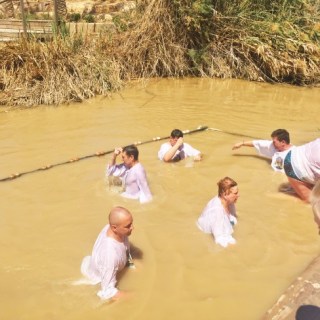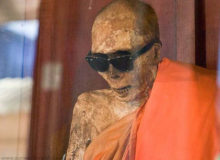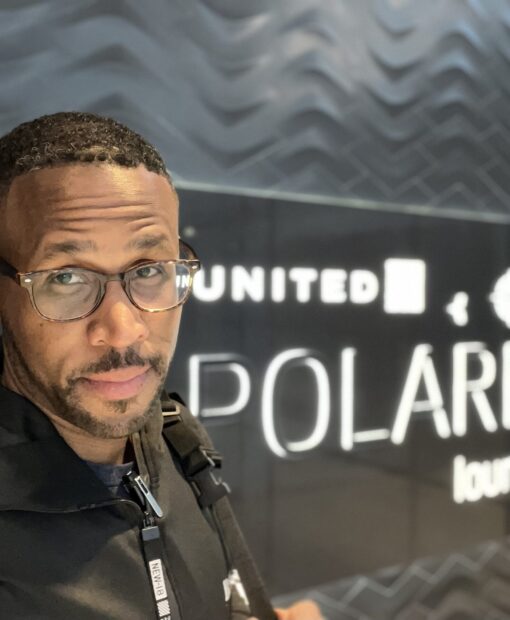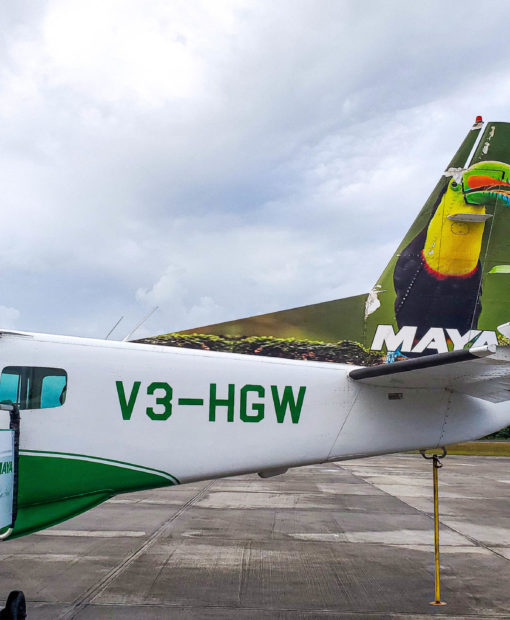Dr. Jamil and Dr. Idries take some time out from their Syrian refugee medical mission to visit Jordan’s historical biblical sites in The Promised Land.
Jordan, a country whose official name is the “Hashemite Kingdom of Jordan”, is a small Arab nation bordered by Israel and Palestine to its west, Saudi Arabia to its southeast, Iraq to its northeast and Syria to its direct north. Despite it’s location sandwiched amongst some of the world’s hottest conflict zones, Jordan remains a relative oasis of peace, calm and stability. Jordan officially became independent of British influence in 1946, and it has existed as an independent constitutional monarchy since that time. Today, Jordan has a population of well over 6.5 million people; with 4 million Jordanians living in the capital city of Amman.
Jordan is a tourism hotspot that hosts close to 8 million visitors a year. In fact Amman (عمّان), the capital city of Jordan, is the 4th most visited city in the Middle East, and the 84th most visited city in the world. On the Globalization and World Cities Research Network’s Global City Index, Amman holds the ranking of a “Beta” city. As a Beta city, Amman has been recognized for being an “important world city that [play’s an] instrumental role in linking [its] region to the world economy”. Amman, a tourism hotbed and an economic powerhouse. Amman, a cosmopolitan modern-day city with malls, bars, night clubs, cafes and art galleries. Amman, a celebrated city of 27 districts built across 17 hills that boasts historic Roman ruins and a majestic citadel. Amman, a city with something for everyone.
Getting There
With Royal Jordanian flying nonstop from Chicago to Jordan’s capital city of Amman, getting to Jordan was relatively easy for us. With a scheduled flying time of just over 11 hours, we settled in after take off for a good night’s sleep. And with the 787’s markedly improved in-cabin humidity and noise levels, a good night’s sleep is exactly what we had. In fact, we both woke up 9 hours after having dozed off feeling like frisky, futuristic Time Travelers. Now it goes without saying that time travel makes us modern day Time Travelers feel VERY hungry. So we were happy, happy, happy to open our eyes to see that breakfast was being served just as we began our brief Mediterranean Sea crossing. Once breakfast and the Mediterranean Sea were firmly in our rearview, we made our final landfall over Tel Aviv Israel. From there, we began our decent; continuing over the vast desert lands of Jordan before finally landing at Amman’s Queen Alia International airport.
Call me crazy, but I think she likes me
Let’s Go See the Promised Land – Mt. Nebo
After a quick bite to eat at the Landmark Hotel (which is of course where we were staying), our first full day together in Jordan began with a 45 minute drive to Mount Nebo. Mount Nebo is a 3300 foot mountain located 6 miles northwest of the Jordanian city of Madaba. Madaba is a small market town of just over 6000 people that is most famous for it’s collection of Byzantine-era mosaics. When driving to Mount Nebo from Amman, it is certainly worth making a quick stop in Madaba; though it is Mount Nebo that is ultimately the prized destination for most visitors to the area. After all, it was from Mount Nebo that the bible says that Moses was finally granted a view of the long sought after Promised Land. It is Deuteronomy (34:1-6) that says of Mount Nebo, “Moses climbed Mount Nebo from the plains of Moab to the top of Pisgah, across from Jericho. There the Lord showed him the whole land…. Then the Lord said to him, ‘This is the land I promised on oath to Abraham, Isaac and Jacob when I said, I will give it to your descendants. I have let you see it with your eyes, but you will not cross over into it.” There, from high atop Mount Nebo, after 40 years of wandering in the desert, Moses was finally able to gaze onto the Promised Land that he had so long sought after. Not able to enter into the Promised Land however, but finally having been able to at least see it, Moses soon died after his trek up Mount Nebo. It is said that following his death, Moses was buried in the valley surrounding Mount Nebo; though the exact location of Moses’ grave is unknown.
Today, Mount Nebo is home to both the Franciscan Archaeological Institute and an active Franciscan monastery. The first sanctuary however ever to be built on Mount Nebo was a church that was constructed in the 4th century. The church was built to commemorate Moses, his visit to Mount Nebo, and his subsequent death after having been able to view the Promised Land from Mount Nebo. In the 300 years that followed construction of this original church, the sanctuary on Mount Nebo was expanded and modified a number of times. However, in the year 1564, the church was abandoned. After being abandoned, the church was largely neglected for several hundred years. During this time, it fell into a state of general disrepair. In 1993 however, the site housing Mount Nebo’s first church was purchased by the Franciscans. The Franciscans then excavated, renovated and renamed the church the “Memorial Church of Moses”. In doing so, they helped to restore the site to an iteration of its former glory.
We arrived to Mount Nebo just after 9 in the morning. With more than half of Jordan being covered by desert, spring days in Jordan can get quite warm. The early mornings and late evenings however can get quite cool and even sometimes down right cold. It was in fact cool enough as we ascended Mount Nebo that we both found ourselves wearing jackets to stay comfortable. Making our way up the mountain, the surrounding air was a refreshing combination of crisply cool, surprisingly still (given the elevation we found ourselves at) and subtly sweet. The sweet fragrance seemed to be mostly coming from the combination of the many wild flower species that can be found growing on Mount Nebo.
After nearing the mountain’s summit, the Memorial Church of Moses came into view. The church, with its beautiful mosaic floors, is unfortunately off limits to the public. However, adjacent to the church, under a tent, we came upon a number of original pieces of mosaic flooring that had been removed from the original church during the renovation process. Once removed, the flooring was kept sheltered under this tent, outside of the church, so that visitors to Mount Nebo would have the opportunity to view some of the church’s original mosaic flooring.
From the tent housing some of the church’s original flooring, we next made our way to the western edge of Mount Nebo’s summit. While standing along the western edge of the summit, visitors to Mount Nebo can view the Promised Land just as Moses had done thousands of years before. On a clear day in fact, when gazing westward, much of the Promised Land, including Jerusalem and the famous gold Dome of The Rock can be seen from Mount Nebo. During our visit to Mount Nebo, the skies were clear enough to afford us some excellent views of Israel and the Promised Land; but a thin layer of early morning haze made seeing Jerusalem and the Dome of The Rock impossible. After taking some time to enjoy Mount Nebo, our next planned stop was the River Jordan and the site of the baptism of Jesus of Nazareth by John the Baptist.

Sign on Mount Nebo indicating the direction and distances of various cities located within the Promised Land
The River Jordan
After having followed in the footsteps of Moses, and after having stolen an ever so brief glimpse of the Promised Land from high atop Mount Nebo in much the same way that Moses had done so many centuries before us, we next made our way back down to our waiting car. Walking to the car, we were both in utter awe of what we had just had an opportunity to experience. In fact, as we both made our way down to our waiting car, it was almost as if we were both having an out-of-body experience. You know, one of those out-of-body experiences that happens when your physical body is still functioning, but your mind is on autopilot and your soul is in control. Certainly our legs were moving, carrying us obediently down Mount Nebo just as our brains had ordered them to do. If they hadn’t been moving, well then we wouldn’t have been advancing down the mountain now would we have? But oddly enough, neither of us could actually feel the earth moving beneath our feet. It was almost as if we were just gliding down the mountain, moving while in a stupefied, trance-like state. Yeah, it was as if our bodies were ready to move on to the next destination, but as if our souls still wanted to stay right where they were. Who knows? Maybe there is a little part of each of us; a little part of that universal essence that resides within all of us; that essence that has no beginning, no middle and no end; that is drawn to, and that feels at home high atop Mount Nebo. Maybe there is a part of each of us that longs for Mount Nebo, and for the majestic views of the Promised Land that she so selflessly gives.
Once back in the car, our trance-like states interrupted by the beep beep beep of Jordanian car horns, we quickly found ourselves approaching our next stop, the River Jordan. It was of course along the banks of the River Jordan that Jesus of Nazareth was said to have been baptized by the 1st century missionary preacher John the Baptist. It was this ritual baptism of Jesus of Nazareth by John the Baptist that many feel announced the first coming of God’s chosen Messiah. It was also during this baptism, an event that many feel laid the foundation for early Christianity, that John the Baptist himself is said to have proclaimed that Jesus was “the Lamb of God, which taketh away the sin of the world.”(John 1:28-29). So today, both Christians and non-Christians alike flock to the waters of the River Jordan, in search of the spot where Jesus of Nazareth was baptized.
The actual site along the River Jordan where many believe Jesus to have been baptized is called Bethany Beyond the Jordan, or Al-Maghtas (Arabic: المغطس ). To reach the waters of the River Jordan and Bethany Beyond the Jordan, visitors must first pay an entry fee of 12JD (about $15) at the River Jordan Visitors Center. From the visitors center, it is then a 5-10 minute drive to the walking trail that ultimately leads to Bethany Beyond the Jordan. This walking trail is not paved, but the gravel covering the trail is well maintained, level, and easy to walk across. And thankfully, given how hot the midday Jordan sun can get, the walking trail that leads to Bethany Beyond the Jordan is also covered.
After a brief walk through the semi-wooded area that the walking trail leads through, visitors emerge to find a bright and open space that hosts the ruins of a number of Byzantine and Roman churches, chapels, caves, monasteries and baptismal pools. While some of these ruins are under water, the water covering Bethany Beyond the Jordan is shallow, so all the ruins (including those under water) can be easily seen.
As we arrived to Bethany Beyond the Jordan, we were first taken by the beauty of the surrounding natural environment. Much like on Mount Nebo, the air surrounding Bethany Beyond the Jordan was still. Still, but not at all stuffy or suffocating. Quite to the contrary in fact, the air surrounding Bethany Beyond the Jordan was surprisingly refreshing, even with the daytime temperatures starting to rise. This fact, along with the tranquility created by the sounds of small birds chirping and gentle afternoon breezes rustling through the surrounding trees, made Bethany beyond the Jordan feel supremely peaceful and relaxing.

More ruins of the churches, monastery, caves and baptismal pools found at the Bethany Beyond the Jordan site.
From Bethany Beyond the Jordan, we next made our way over to the main body of the River Jordan. At one time, long before many of the tributaries that once connected Bethany Beyond the Jordan to the main body of the River Jordan had dried up, there was a constant flow of water beyond the two areas. Today, Bethany Beyond the Jordan is cut off from the main body of the River Jordan. So to reach the main body of the River Jordan, visitors have to take a quick 2-3 minute walk to the west of the baptism site. As we made this walk, just steps from the main body of the River Jordan, we came upon the Orthodox Church of St. John the Baptist. The church, which was constructed in 2003 to commemorate the life of John the Baptist, was funded by the Russian government. While modest in size, the church’s large golden dome along with it’s beautifully painted walls and ceilings give it a feel and flair that is sophisticated beyond its years.
After visiting the Orthodox Church of St. John the Baptist, we next made our way to the main body of the River Jordan. The trail leading to the River Jordan from the Orthodox Church was short, and after climbing down a few stairs, we reached a covered patio area that sits immediately adjacent to the river. From this patio, we got our first up close and personal views of the River Jordan. The River Jordan runs from Mount Hermon on the Lebanon-Syria border southward through northern Israel and into the Sea of Galilee. From the Sea of Galilee, the River Jordan continues on a southward course, running between Israel and the Israeli occupied Palestinian West Bank to it’s west and Jordan to it’s east, before terminating in the Dead Sea. The river’s course between Jordan to it’s east and Israel to it’s west could clearly be seen from our perch on the viewing patio, as running right down the middle of the river was a dividing line. To the right (west) of that line was Israel and the Israeli portion of the river; and to the left (east) of that line was Jordan and the Jordanian portion of the river. Also, camped out on each side of the river were soldiers. Israeli soldiers on the Israeli side of the river and Jordanian soldiers on the Jordanian side of the river.

People being baptized in the River Jordan (Note the barrier in the water denoting the area where Jordanian waters end and Israeli waters soon begin)

People being baptized in the River Jordan (Note the barrier in the water denoting the area where Jordanian waters end and Israeli waters soon begin)

People being baptized in the River Jordan (Note the barrier in the water denoting the area where Jordanian waters end and Israeli waters soon begin)
To reach the waters of the Jordan River, visitors only need to travel down a few steps that lead from the viewing patio directly into the water. The water of the River Jordan contains a lot of silt; and at times it’s currents can run quite swiftly. Unfortunately, because the governments of Israel, Jordan and Syria have all built pumping stations, channels and reservoirs that divert water from the Jordan River into their individual municipal water systems, both the volume of the river and the ecosystems of the river have been adversely affected. With 70%-90% of the river’s water being used for human purposes, the vitality of this historic body of water is under constant threat. Still, the river, and the land that surrounds the river is home to a wide variety of wildlife and birds. Every year, close to 500 different bird species migrate to the land surrounding the river. While we enjoyed the river from the patio area, many visitors sharing the space with us took off their clothes and donned their white baptismal robes before making their way into the water. After hanging out on dry land by the riverside for some time, we eventually made our way back to our car. Once in the car, we headed out for our next stop of the day; the infamous Dead Sea. Read about our time at both the Dead Sea and in the city of Amman in a coming blog post!!! Until then remember, keep your bags packed and your passport ready!!!

 June 15, 2017
June 15, 2017






































 May 19, 2018
May 19, 2018 





